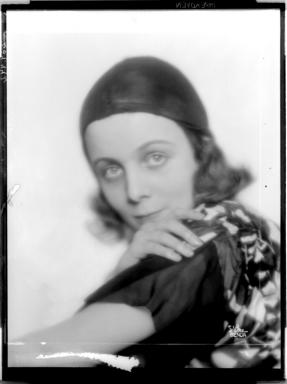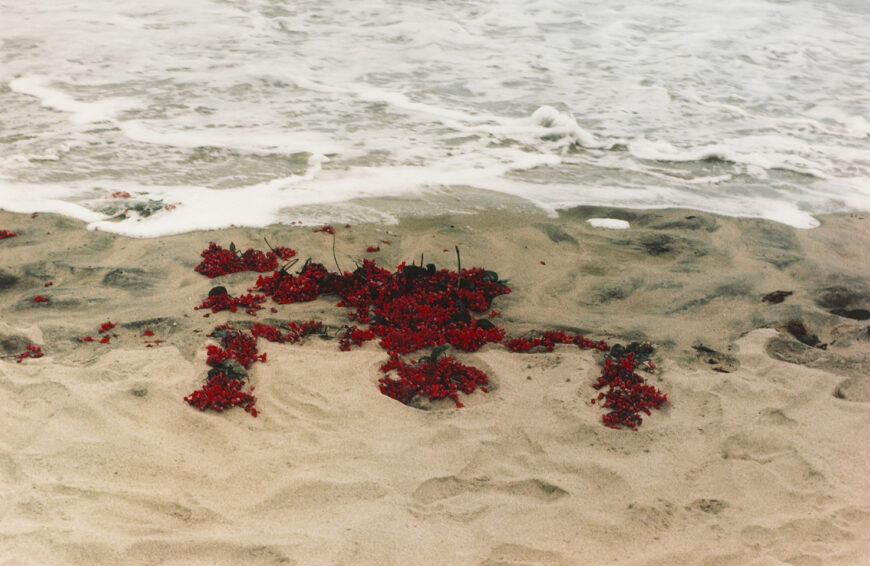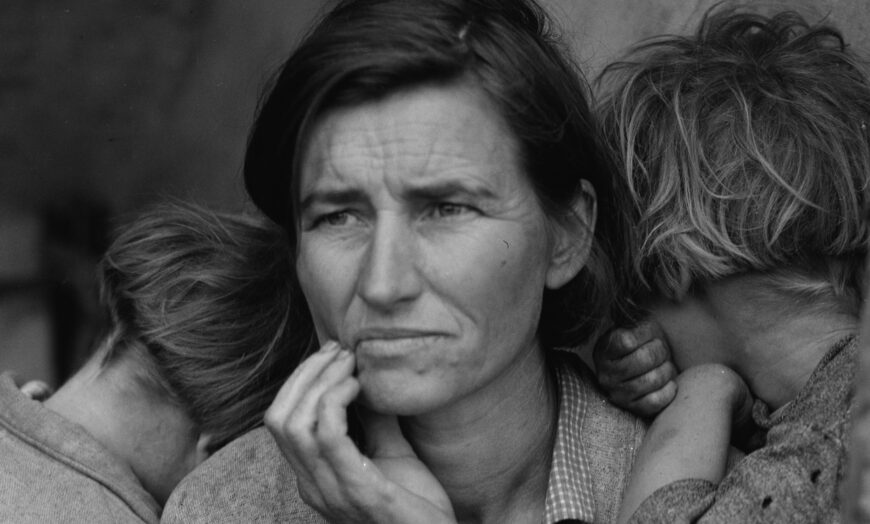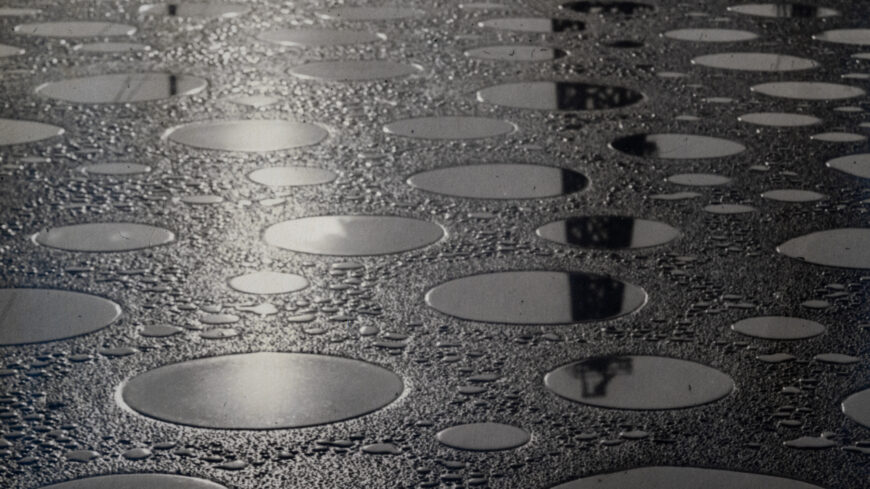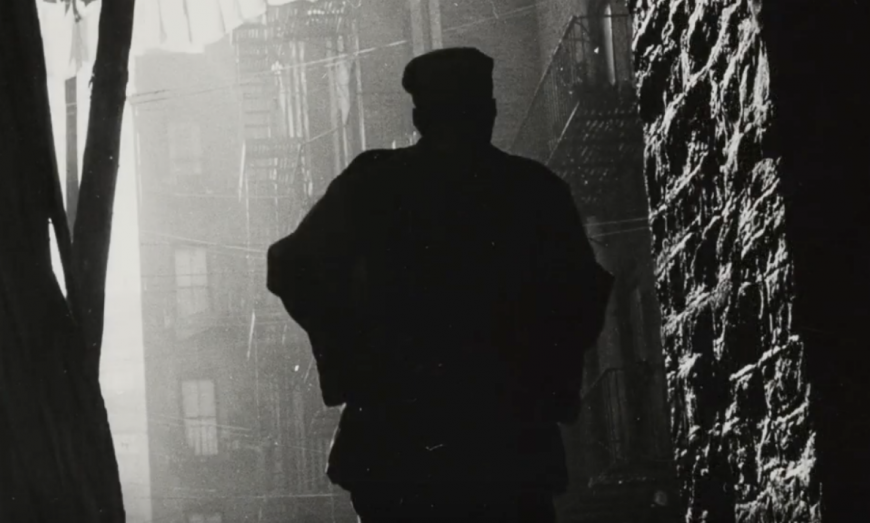What initially might seem like random images is actually Hannah Höch’s comment on Weimar Germany’s culture and politics.
Hannah Höch, Cut with the Kitchen Knife Dada Through the Last Weimar Beer-Belly Cultural Epoch in Germany, 1919, photomontage, 114 x 90 cm (Staatliche Museen, Berlin; please note, this is a refreshed Smarthistory video). Speakers: Dr. Juliana Kreinik, Dr. Steven Zucker, and Dr. Beth Harris
[0:00] [music]
[0:04] Dr. Juliana Kreinik: This amazing photo montage is by German artist Hannah Höch. It’s from 1919. It has an extremely long title, “Cut with the Kitchen Knife Dada through the Last Weimar Beer-Belly Cultural Epoch in Germany.”
Dr. Steven Zucker: [0:19] 1919. That was a really pretty fraught moment, so what was going on?
[0:22] Dr. Kreinik: Political chaos. The government has been completely changed after World War I. There’s a lot of conflict between the Spartacists, the far-left wing communists, and the Freikorps was encouraged to attack people by members of the government.
[0:39] There are all these clashes. A lot of people end up getting arrested, and some people end up getting killed, and that’s just one particular moment. January 1919, all of that infighting happens.
Dr. Zucker: [0:48] All this fragmentation is just beautifully captured here. The contrast from the kind of long war, which would have really focused the country’s attention, then this complete breakdown.
[0:58] Dr. Kreinik: If you think about the title, “Cut with the Kitchen Knife,” think about the idea of cutting things, literally. That works for the photo montage.
[1:04] She’s cutting a swath through all this and piecing things back together in ways that make sense to her, focusing on the fragmentation as defining culture at that moment.
Dr. Zucker: [1:14] I’m assuming most of these photographs came from newspapers, from magazines.
[1:17] Dr. Kreinik: They did.
Dr. Zucker: [1:18] It’s all immediate, and topical, and all relevant at this moment, but it’s being reconstructed.
[1:23] Dr. Kreinik: But I love that it’s a kitchen knife. She’s very focused on the role of women artists. As a Dadaist, how was she treated? She wasn’t treated very well.
[1:31] I think one of the things she had a problem with is a lot of male Dadaists had grand ideas about changing cultural mores and views and gender equity.
[1:40] But then, in their practice of that, they did nothing. There’s a couple of ways that that is visualized here. If we look at the very central image, we see one of the foremost German Expressionist artists, Käthe Kollwitz.
[1:53] The body underneath her is dancer Niddy Impekoven. If you look at the way that forms a central point around which everything else rotates, and there is a sense of movement happening all at the same time.
[2:04] One thing I always think is interesting is this tiny little head is Hannah Höch. Instead of putting her signature, she puts a little portrait of herself. What it is, is it’s pasted onto the corner of a map which shows the countries in Europe that had women’s voting rights at the time.
[2:20] That’s one of the ways that we know she was thinking about the role of women in society and in the art world.
[2:27] First of all, if you think about this image in terms of quadrants, usually the right side is known as the anti-Dadaist.
[2:33] Now, the people that are in the anti-Dadaist corner are obviously politicians. Kaiser Wilhelm is right here. His head is really big and this figure is quite large. She makes fun of Kaiser Wilhelm with this little figure of two wrestlers that are creating the mustache.
[2:46] There are also other political figures. There is General Von Hindenburg, the head of him on the body of this exotic dancer. Down here there is German Minister of Defense, Gustav Noske, and he is talking to another general, and this general up here is standing on their heads.
[3:00] If we go down here, in the lower right corner, we see the world of the Dadaist. Right here it says “Dadaisten.” This is the corner that has Hannah Höch and the map, and it also has other Dadaist figures. There’s the Dadaist Raoul Hausmann.
[3:13] Hannah Höch had a relationship with Hausmann for a while, and for long time all the literature on Höch referred to her as the wife of Raoul Hausmann. Here you see the two heads of Dadaists George Grosz and Wieland Herzfelde, the brother of John Heartfield; and Niddy Impekoven, the same dancer that’s in the center here, is now over here bathing John Heartfield in this bathtub.
[3:31] In here we have Lenin, and there’s another Dadaist, Johannes Baader. Then you see one of the communist leaders, Karl Radek, and he was back and forth between Russia and Germany. He’s very involved with the Communist Party…Karl Marx, then over here is the head of modern art critic and writer Theodore Daübler, and his head is on top of a baby body.
Dr. Zucker: [3:51] So really infantilizing all these people.
[3:52] Dr. Kreinik: Yeah, and then they’re all men on the left side. They’re forms of Dada. This is Dada propaganda. This is Einstein right here, actually, and he is saying a couple of different things. Right here is a little bit of text that’s in German. It says, “He, he, young man, Dada is not an art trend,” that it’s not just something that’s coming and going, it’s something more meaningful.
[4:09] Now down here, there’s a lot of scenes of mass gathering. We see Karl Liebknecht, one of the German Communist Party leaders, along with Rosa Luxembourg who were jailed, tortured, and then assassinated in January ’19. He’s saying, “Join Dada.”
[4:23] Dada is going on all over Europe and there are different centers of Dada. They all have different art-making practices, and photomontage was central to the Berlin Dadaists.
Dr. Zucker: [4:33] The whole notion of the kitchen knife is really empowering.
[4:36] Dr. Kreinik: The idea of domesticity as being something that could undermine cultural values is amazing.
[4:41] [music]
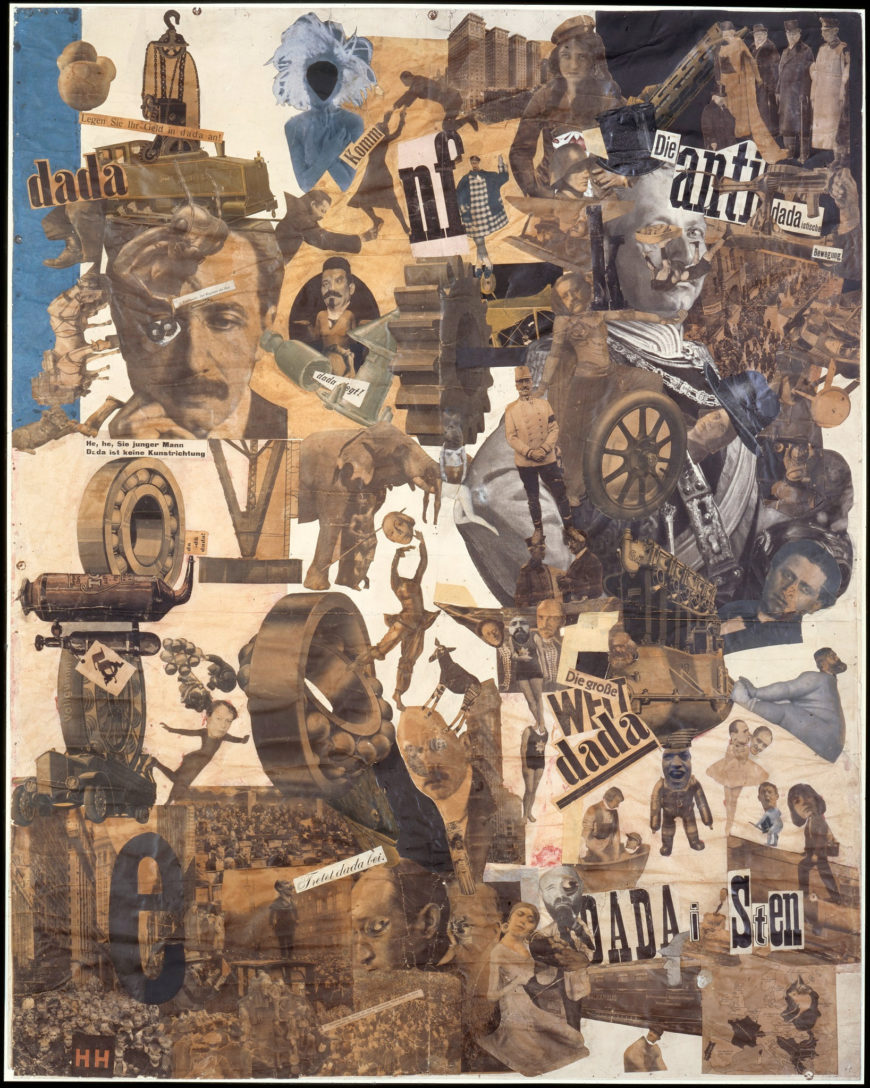
Hannah Höch, Cut with the Kitchen Knife Dada Through the Last Weimar Beer-Belly Cultural Epoch in Germany, 1919–1920, collage, mixed media, (Nationalgalerie, Staatliche Museen, Berlin)
If we look closely at the cacophony of seemingly random images that make up Hannah Höch’s large-scale photomontage, a cross-section of Weimar Germany’s cultural and political milieu comes into focus. Here, the “Kitchen Knife Dada”—a metaphor for Höch’s careful slicing and dicing—cuts a swath from lower right to upper left, separating Dada and “anti-dada” elements.
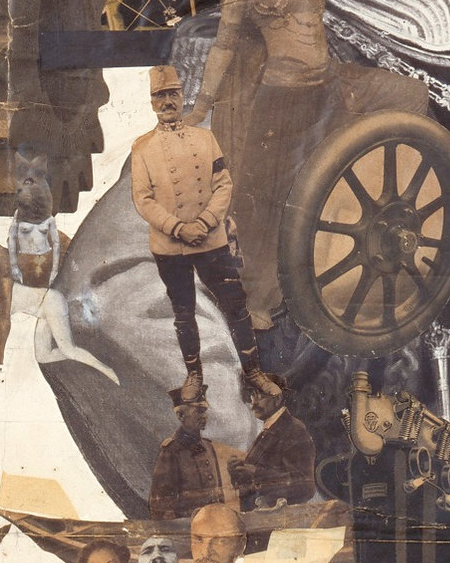
Hannah Höch, detail of Kaiser Wilhelm II, Cut with the Kitchen Knife Dada Through the Last Weimar Beer-Belly Cultural Epoch in Germany, collage, mixed media, 1919–1920 (Nationalgalerie, Staatliche Museen, Berlin)
Look more closely still, and the image of Kaiser Wilhelm II emerges, standing tall in his imperial finery, looming indignantly over the right half of the composition. Surrounded by disembodied heads and bodies, text fragments, bits of machinery, buildings, maps, and crowds, the Kaiser seems to fade into the background. Elsewhere, women dance, skate, and climb, while men stand at attention or are made to participate, unwittingly, in nonsensical and sometimes violent activities. This densely populated work is difficult, if not impossible, to take in all at once. Though complex, it is worth digging in here to understand the cast of characters and what they tell us about the work and the larger thematics of Berlin Dada.
Cut with the Kitchen Knife is a photomontage, made by cutting photographs from mass media publications and pasting them onto a support to create new juxtapositions and new meanings. This is a layered and complex artwork that speaks to the tumultuous moment it was created. As Höch later put it:
“We [the Dadaists] regarded ourselves as engineers, we maintained that we were building things, we said we put our works together like fitters.” [1]
This cut-and-paste aesthetic was wholly embraced by Berlin Dada as a form of political and social critique. The new process allowed the group to comment on the newly established Weimar Republic.
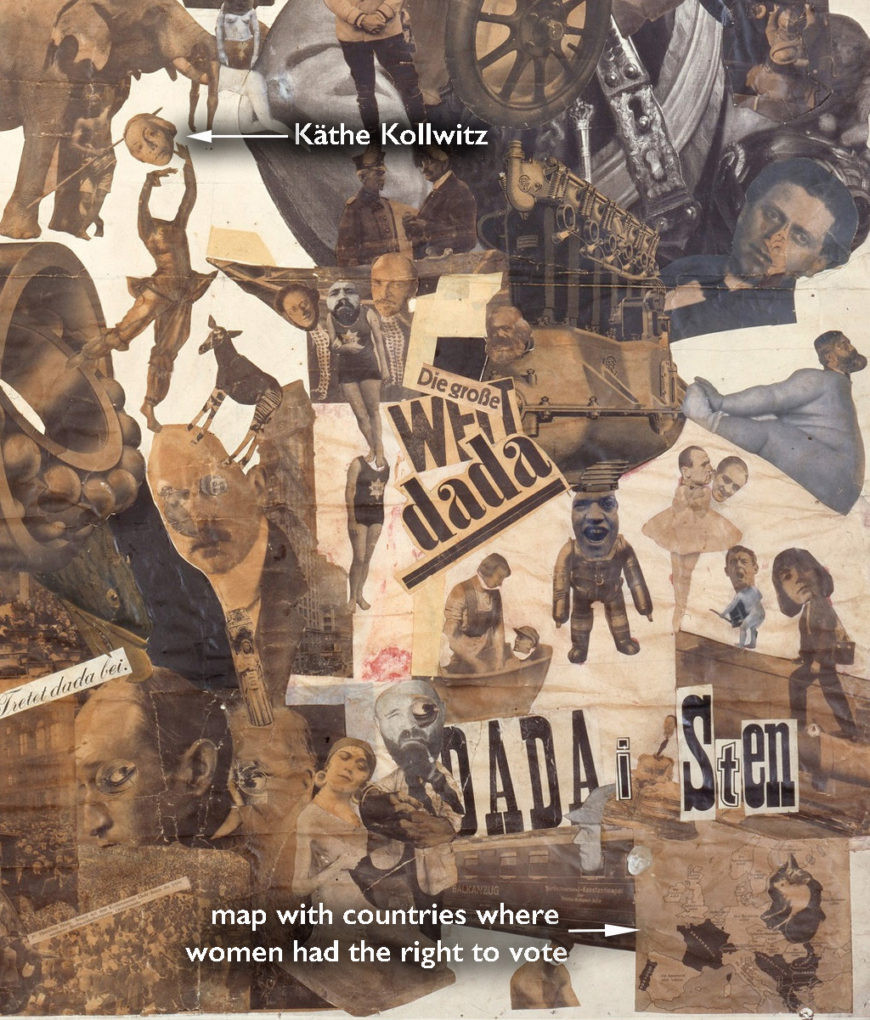
Hannah Höch, detail of lower right, Cut with the Kitchen Knife Dada Through the Last Weimar Beer-Belly Cultural Epoch in Germany, collage, mixed media, 1919–1920 (Nationalgalerie, Staatliche Museen, Berlin)
Höch’s Dada sensibility and her status as a “New Woman” (a historical construct, the “New Woman” was understood to be young, independent, often smartly dressed with a short bob hairstyle, eschewing home and family life in favor of joining the workforce) made her work relevant not only to Weimar culture and politics, but also to changing gender roles. While mocking Weimar politicians, Cut with the Kitchen Knife also celebrates women’s victories. A map at lower right indicates the countries where women had the right to vote—a right only recently ratified in Germany with the signing of the new constitution in 1918. In the center of the composition, the head of artist and activist Käthe Kollwitz, taken from a recent newspaper story, attests to her appointment as the first female professor at the Prussian Academy of Arts.
Berlin Dada’s New Woman
Höch had moved to Berlin in 1912, working part-time for Ullstein Verlag—the publisher of Berliner Illustrirte Zeitung (Berlin Illustrated Newspaper) and Die Dame (The Lady—Germany’s equivalent to Vogue). The only woman in the Berlin Dada group, she lived a non-traditional lifestyle that bears similarities to the so-called “New Woman.”
In Weimar Germany, the “New Woman” was the subject of both praise and derision in Berlin’s illustrated press. Her image, which appeared frequently in newspapers and magazines, became fodder for Höch’s photomontages and their celebration of new and expanding roles for women. In Cut with the Kitchen Knife such well-known female figures as Käthe Kollwitz, dancer Niddy Impekoven, and actress Asta Nielsen, are aligned with the Dada axis—from the word “dada” on the upper left to “die große welt dada” (the great Dada world) spelled out at lower right.
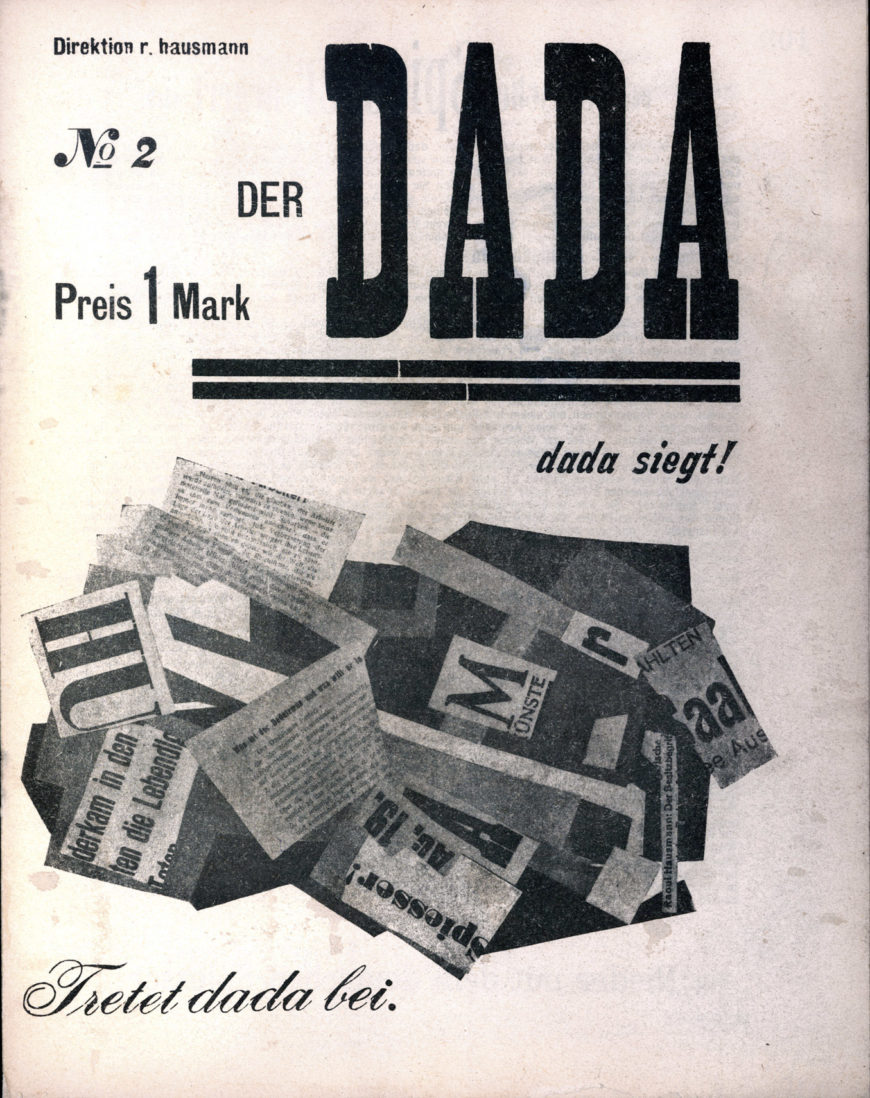
Der Dada expressed many of the Berlin Dadaist ideas, and included some of the earliest examples of members’ use of collage. “Tretet dada bei” (“Join dada”), cover of Der Dada no. 2, December 1919, edited by Raoul Hausmann, John Heartfield, and George Grosz
Dada’s Berlin Outpost
Dada, which originated in Zurich, Switzerland, embraced the irrational and put forward an iconoclastic “anti-art” ethos, challenging the conditions, consumption, and circulation of art. Dada made its way to Berlin in early 1918 when Richard Huelsenbeck, who was involved in early Dada activities in Zurich, returned to Germany and helped found Club Dada. A raucous provocation to civil society and entrenched traditions in art, the transnational movement (with outposts in Zurich, New York, Berlin, Cologne, Hannover, and Paris) quickly spread. Each Dada group developed its own set of practices.
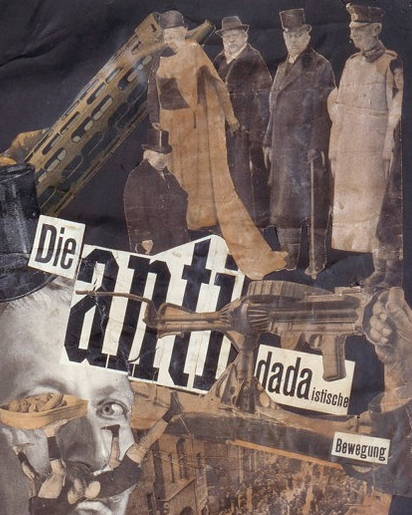
Hannah Höch, detail of political leaders, Cut with the Kitchen Knife Dada Through the Last Weimar Beer-Belly Cultural Epoch in Germany, collage, mixed media, 1919–1920 (Nationalgalerie, Staatliche Museen, Berlin)
In Berlin, still reeling from the loss of WWI and the political turmoil and assassinations that followed, Dada took on a decidedly political tone. The Berlin Dadaists embraced a new form of political propaganda in the medium of photomontage. They were especially critical of the artistic and cultural traditions aligned with Wilhelmine Germany (the period of Kaiser Wilhelm II’s rule from 1890 to 1918), which many perceived as the corrupt culture responsible for leading the world into war. The Weimar Republic was founded in 1918 and was soon followed by the Spartacist uprising in early 1919, and the assassinations of Communist leaders Karl Liebnecht and Rosa Luxemburg. Drawing on images from the popular press, Berlin Dada mounted a bitter critique of Weimar politics and culture. Many of the period’s prominent political leaders—Kaiser Wilhelm II, Weimar Republic president Friedrich Ebert, General von Hindenburg, and General Minister of Defense Gustav Noske—can be seen at the upper right of Cut with the Kitchen Knife.
What’s old is new again: discovering photomontage
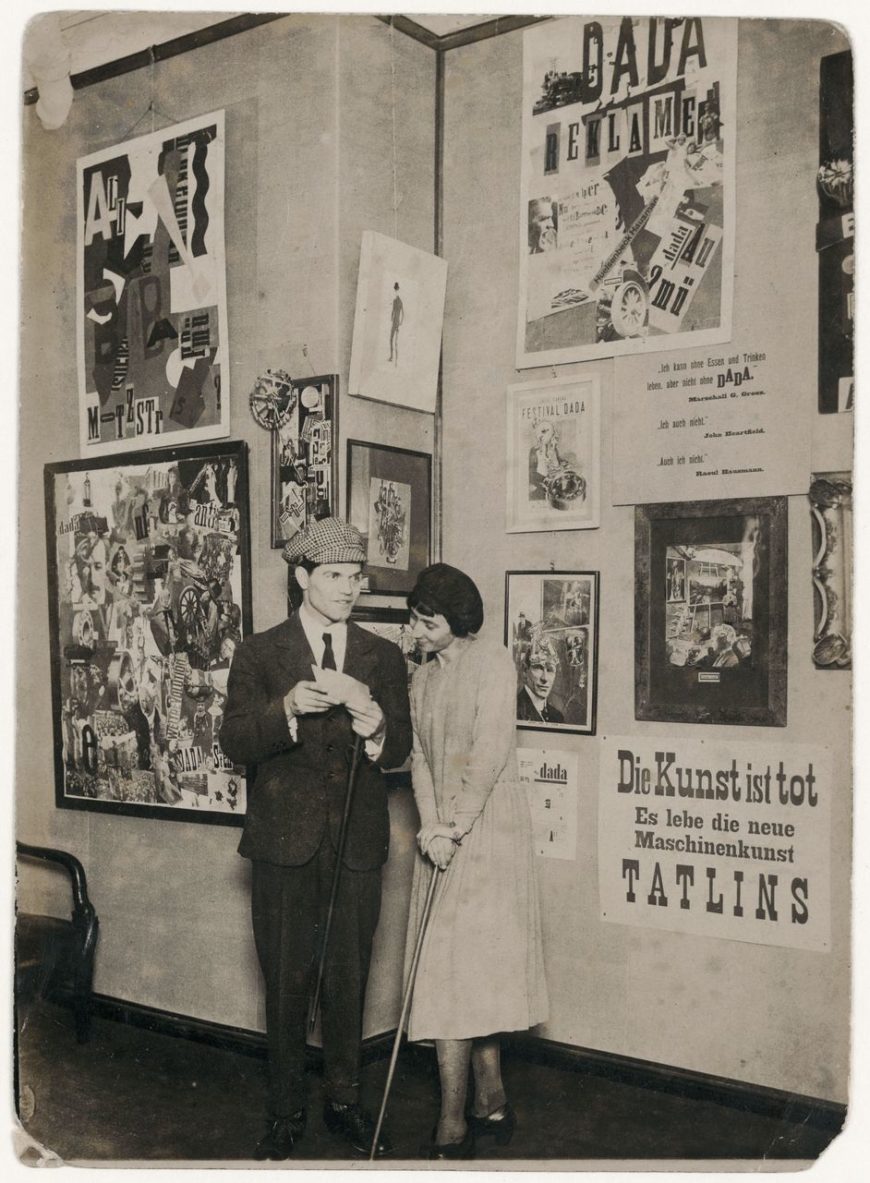
Raoul Hausmann and Hannah Höch at the First International Dada Fair, Berlin 1920, (Hannah-Höch-Archiv, © Foto: Robert Sennecke)
Berlin Dada, which is now synonymous with the new medium of photomontage, made emphatic claims regarding the “discovery” of the medium. The quotation marks around the word “discovery” are intentional. The cut-and-paste technique was, in fact, a popular 19th-century process long used by amateurs to produce photography albums. Höch and her lover (and fellow Dadaist) Raoul Hausmann both claimed to have discovered photomontage in 1918 while vacationing on the Baltic Sea. There they had encountered military mementos in the form of lithographs depicting soldiers in uniform with photographed heads pasted on. This discovery, and the desire to rethink the possibilities of picture-making, prompted them to start making photomontages on their return to Berlin. With the boom in mass media publications, photography provided a seemingly endless array of images of well-known personalities and politicians to recombine and reconfigure for their biting critiques of Weimar culture.
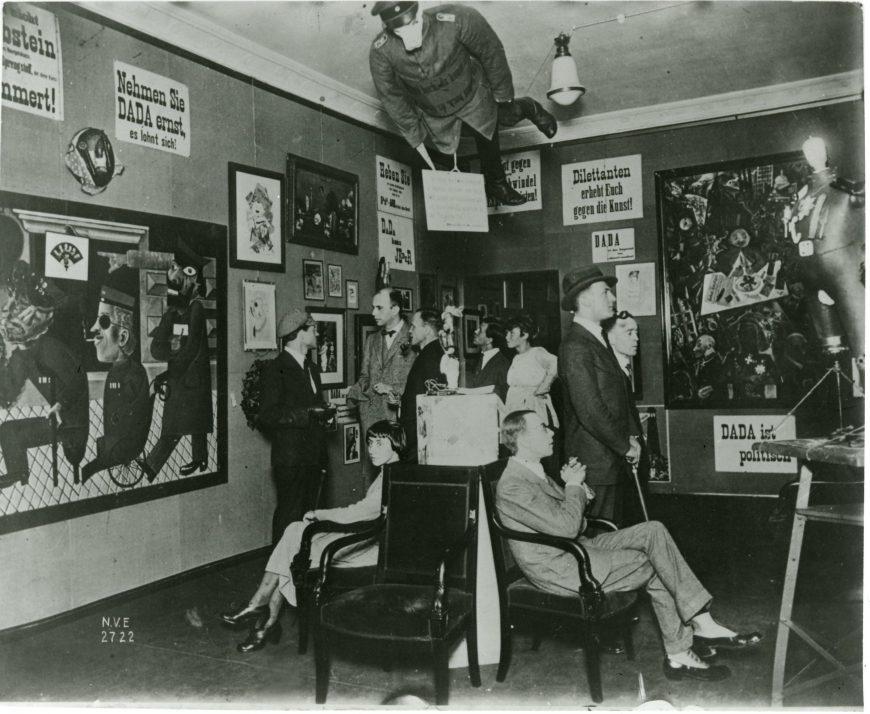
Galerie Otto Burchard, Berlin, 30 June–25 August 1920. Right to left, Raoul Hausmann, (seated) Hannah Höch, Otto Burchard, Johannes Baader, Wieland Herzfelde, Mrs Herzfelde, (seated) Otto Schmalhausen, George Grosz and John Heartfield. Hanging from the ceiling is John Heartfield and Rudolf Schlichter’s Prussian Archangel. On the back wall George Grosz’s painting Germany. A Winter’s Tale (Bildarchiv Preussischer Kulturbesitz, Berlin).
First International Dada Fair 1920
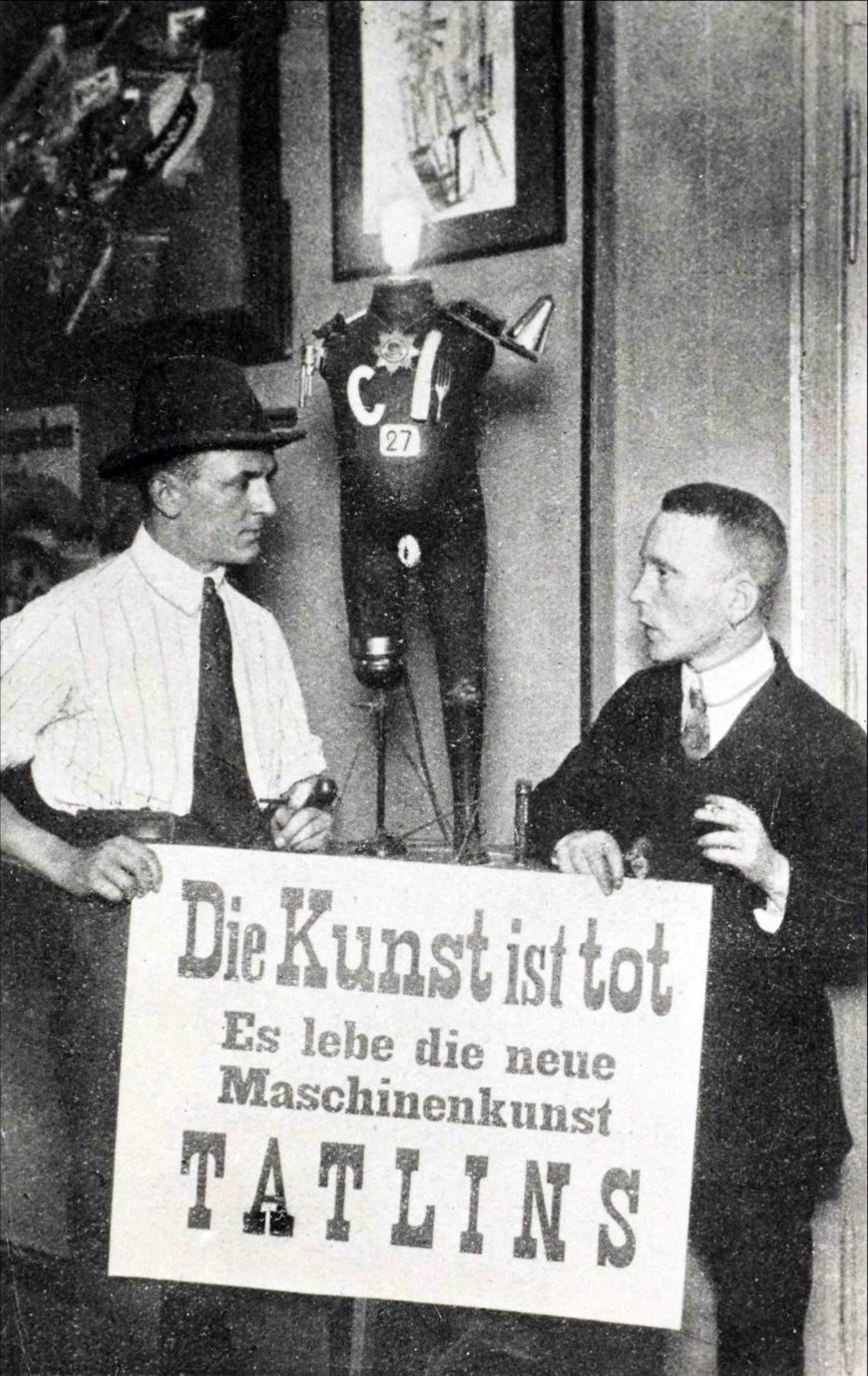
George Grosz and John Heartfield holding a sign that states “Art is Dead Long Live the Machine Art of Tatlin,” photo at the First International Dada Fair in Berlin, 1920
Cut with the Kitchen Knife was initially shown publicly at the First International Dada Fair in Berlin in 1920. Although hard to believe now, Höch had to fight for the opportunity to show her work in the Dada Fair. Grosz and Heartfield, who organized the Fair along with Hausmann, wanted to exclude her, but Hausmann argued for her inclusion. On entry to the Fair, viewers were bombarded with sights, sounds, and images, including signs and slogans reading “Dada is Political” or “Art is Dead Long Live the Machine Art of Tatlin.” These were intermingled with artworks of varying sizes and shapes hung floor to ceiling, or in the case of John Heartfield and Rudolf Schlichter’s effigy of a German officer with a pig’s head, hanging directly from it.
The group’s new experiments with photomontage dominated at the fair. In his introduction to the catalogue, Wielande Herzfelde explained that “[t]he only program the Dadaists recognize is the duty to make current events, current in both time and place, the content of their pictures.” The source for their new pictures was “the illustrated magazine and the lead stories of the press.” [2]
For Berlin Dada, art was political.
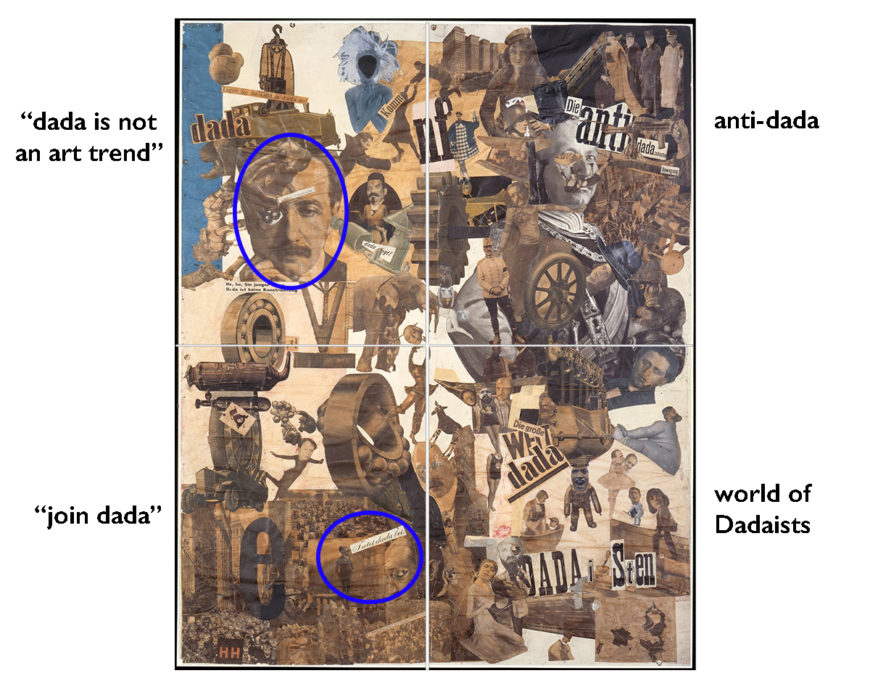
The four approximate quadrants of the photomontage. Hannah Höch, Cut with the Kitchen Knife Dada Through the Last Weimar Beer-Belly Cultural Epoch in Germany, collage, mixed media, 1919–1920 (Nationalgalerie, Staatliche Museen, Berlin)
Cutting through Weimar’s Beer-Belly
Höch’s photomontage and its cast of characters is divided, approximately, into four quadrants. The photomontage includes the “anti-dada” contingent at upper right (full of Weimar political figures), and the world of the Dadaists at the lower right. Dada images and text cut diagonally across the picture to the upper left where Albert Einstein proclaims that “dada is not an art trend.” At lower left, images of the masses seem to imply a coming revolution headed by assassinated Communist leader Karl Liebnecht who advises us to “join dada.”
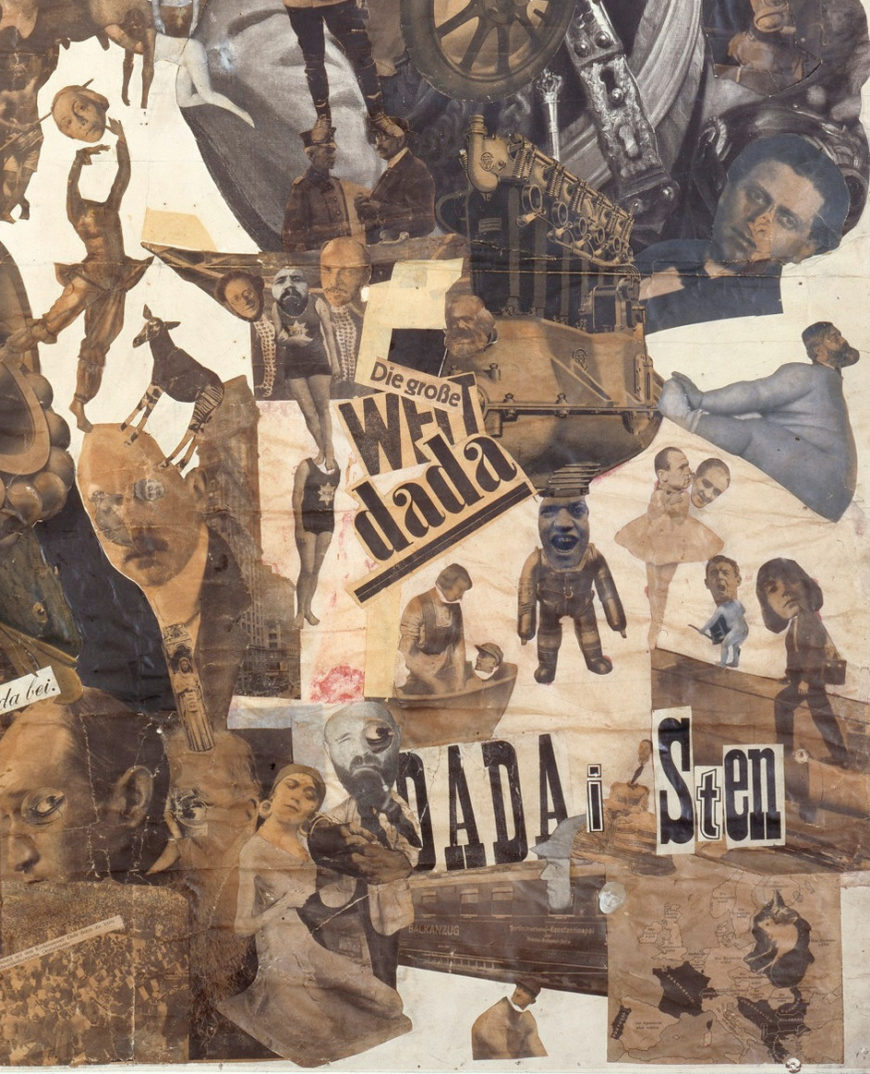
Hannah Höch, detail of the Dada section (lower right) in Cut with the Kitchen Knife Dada Through the Last Weimar Beer-Belly Cultural Epoch in Germany, collage, mixed media, 1919–1920 (Nationalgalerie, Staatliche Museen, Berlin)
In the Dada section at lower right, we see John Heartfield being bathed by Niddy Impekoven, and the heads of Wieland Herzfelde and George Grosz on the body of a ballerina. Just above, the heads of Dadaist Johannes Baader, Russian leader Vladimir Lenin, and German Communist leader Karl Radek are pasted on the body of another dancer. The open-mouthed face of Raoul Hausmann sits on the body of a deep-sea diver. If we look closely, Höch’s tiny head appears at the upper left corner of a map showing countries with women’s suffrage. At the center of the composition is the headless pirouetting figure of Niddy Impekoven, above which floats the head of famed artist and activist Kollwitz.

Hannah Höch, detail of Kaiser Wilhelm II, Cut with the Kitchen Knife Dada Through the Last Weimar Beer-Belly Cultural Epoch in Germany, collage, mixed media, 1919–1920 (Nationalgalerie, Staatliche Museen, Berlin)
Dada—its calls for revolution, its celebration of technology, popular culture, and the New Women—dominates the composition. It excises Weimar’s Beer-Belly Cultural Epoch and the figures aligned with it. It seems fitting that the instrument used to excise this “fatty flesh” is Höch’s “kitchen knife”—an instrument aligned with women’s work. Women, then, take on an active role in this new Dada world, moving and expressing themselves freely, working to bring on the Dada revolution. As we look again at the image of Kaiser Wilhelm II, looming over the Dada world in his uniform and high-hat, we notice that he has been turned into little more than a plaything (a large wheel at his chest height might make him turn like a child’s toy) or into a distant memory (consumed by the machinery of Berlin Dada, all of which appears to emerge from Raoul Hausmann’s head). Either way he has lost potency thanks to Höch’s deft handling of her kitchen knife.



